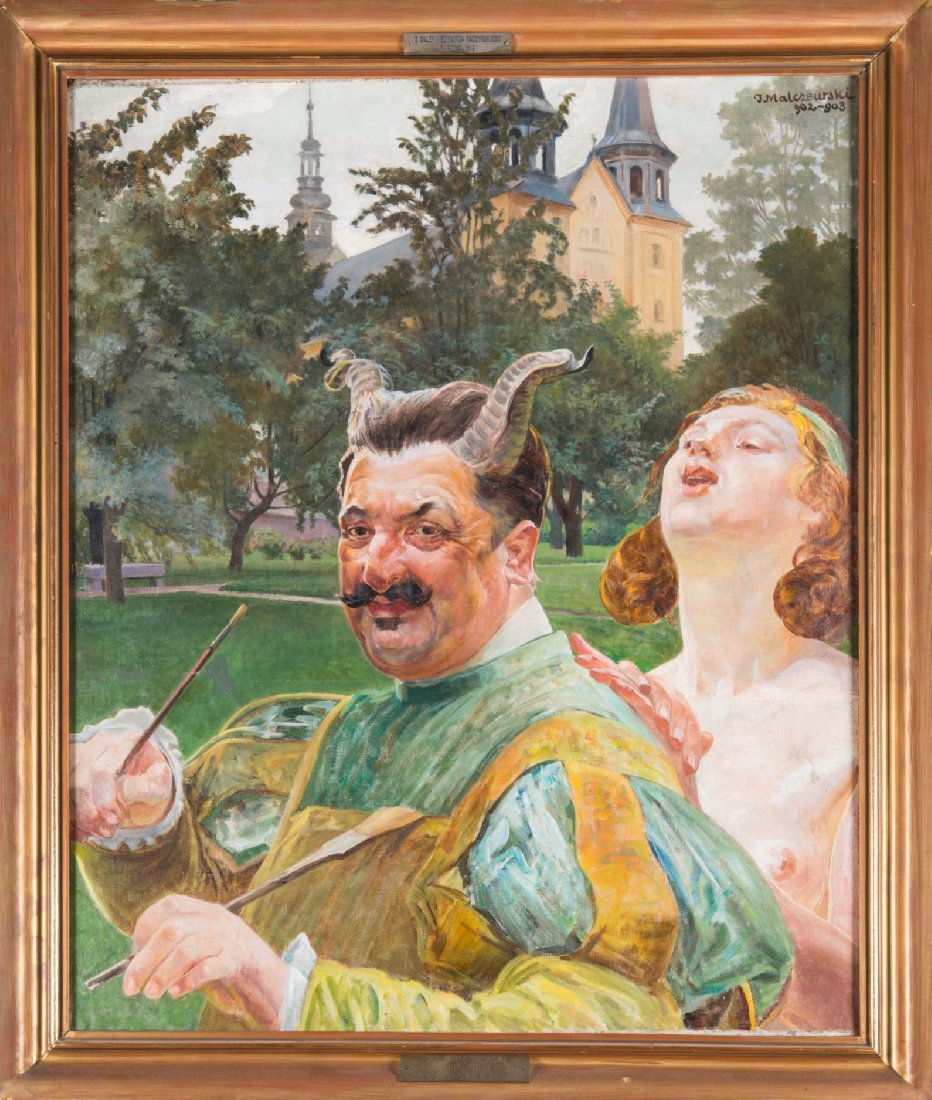Description:
Jack Malczewski (1854-1929) had a love for art and romantic literature, particularly the poetry of Juliusz Słowacki, which he inherited from his family home. He was of the szlachta class, though not wealthy. His father Julian supported him in his career as a painter. The events of 1863, the January Uprising and the subsequent repression, left a particular mark on the young artist. His first teacher was Adolf Dygasiński. His youth, 1867-1871, he spent at the Karczewski estate in Wielgie. In 1873 he began studying at the Academy of Fine Arts in Krakow under Jan Matejko’s tutelage. He was a student of Władysław Łuszczkiewicz and also studied at the École des Beaux-Arts in Paris. He traveled to Italy, Vienna, Munich, Greece, and Asia Minor. From 1896-1900 and 1910-1914 he was a professor at the Academy of Fine Arts in Krakow, and from 1912-1914 he was its rector. He began with a romantic realism, then a naturalism, with the theme of the exile to Siberia and the inspiration of Juliusz Słowacki’s Anhellim dominating his work of this period. At the same time, fantastic and allegorical elements began to appear in his work. After his father’s death in 1884, the recurring motif in Malczewski’s work was Thanatos, the god of death. After 1890 his art became completely symbolic. Works manifesting this turn to symbolism include Introduction (1890), Melancholia (1890-1894), and Błędne Koło (1895-1897). The artist addressed existential, historical, and artistic issues, combining Greco-Roman and biblical motifs with local folklore and the so-important Polish landscapes in his works. Form, color, monumentality of his representations, and their expressiveness became his trademark.
Description of the painting:
The portrait depicts Syndolfina Zefiryna of the Janina Bielecki coat of arms, a member of the Board of the Krakow Society of Friends of the Fine Arts. It was with his participation and in collaboration with the Lviv and Krakow Societies that the “One Hundred Works of Jacek Malczewski” exhibition was organized in Lviv from April to May 1903. The objects for the exhibition were provided by the artist himself and private collectors, including Edward Aleksander Raczyński. The painting “Zefiryn Bielecki as a Faun” was completed in the year the exhibition opened. It depicts a man with the attributes of a painter, characterised as a faun, with a naked woman – a muse – standing right behind him.
In the foreground two figures are visible. The man in the painter’s attire holds two paintbrushes in his hands, directed towards him. This technique intensifies the impression of self-portrayal and the landscape emerging in the background. The head of the portrayed one is adorned with goat horns of the faun, satyr. A characteristic feature of these bacchic figures is also the smile appearing on the man’s face and the expression of slightly narrowed eyes turned towards the viewer. Behind the painter – Zefiryn Bielecki stands a naked woman. The model, muse or chimera, so often appearing on Jacek Malczewski’s canvases, flaunts her body in an ecstatic state of exaltation. By placing her hands on the man’s back, she establishes a direct, physical contact with him.
Faun symbolizes passions and unrestrained forces, unbridled instincts and art*. Critics emphasize the inner rift of his character. He becomes a synthesis of animal nature and the spirit that breaks it. He embodies the dionysian element, that is, music. It is opposed to the apollonian element – the visual arts. In the painter’s portrait, however, the faun is not a secondary character, as in most of Jacek Malczewski’s works. In this case, the main character puts on the costume of a satyr, becomes portrayed and portraying at the same time. He expresses the creative act and dynamism. The dionysian and the apollonian elements. He becomes art. It allows us to see a completely different dimension of creativity and the creator, who merges with his work, and does so consciously.


